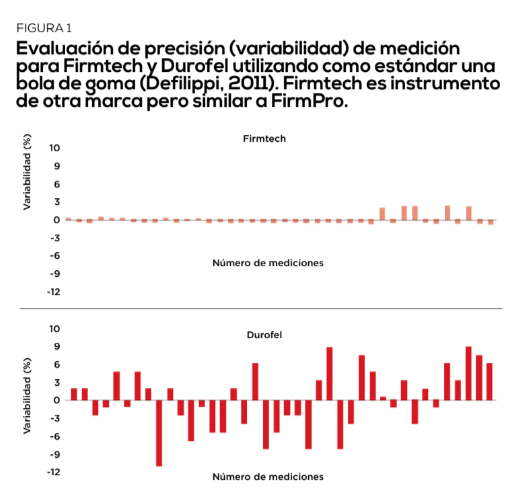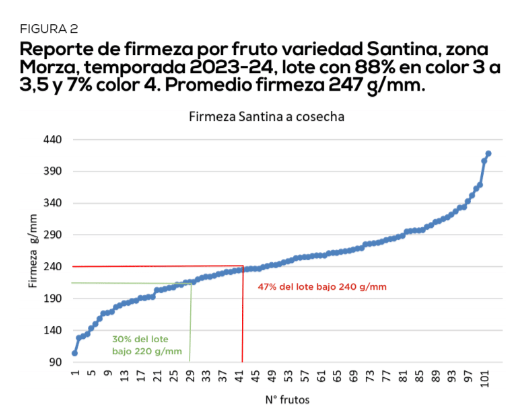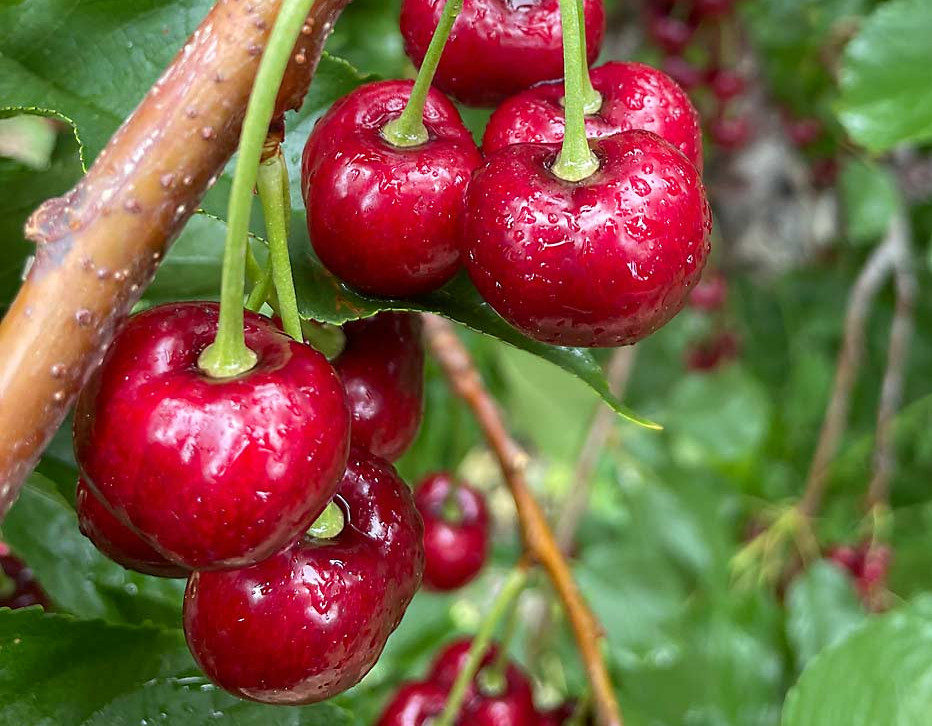No one in the industry ignores the increase in cherry production in Chile over the past 10 years, largely due to Chinese consumer preferences. Therefore, it is essential to ask what the most important attribute for them is.
The truth is that there is no attribute that isn't important. The larger the size, the better the selling price; the more mahogany and uniform the color, the greater the return for the producer; even defect-free boxes with green stems improve their acceptance. So it's not easy to choose just one attribute, or maybe it is?
From what we have observed in the arrivals in China this season, although every attribute is important, it is firmness that undoubtedly marks a strong preference. What does it mean? That this parameter, being present, already gains the acceptance of market buyers and thus is what consumers from such a distant country prefer.
This raises a series of questions: what is firmness, does a consumer in Europe have the same perception of this attribute as a consumer in Asia, how is it measured and how are these measurements interpreted? Firmness is an attribute of the fruit's texture, linked to the structure of the cell wall, where shape, size, and content of structural compounds (hemicellulose, cellulose, and pectin) give different characteristics to this parameter.
As the fruit grows and ripens, the firmness of the tissue decreases, and this loss responds to the composition of the cells and the state of ripeness. Simply put, for cherries, the more color there is, the less firmness there will always be. Initial firmness and its decrease depend on how the cells and their junctions were built during the early phase of fruit development, so all the management carried out in the field before and during this period becomes crucial.
Methods and Tools
How to measure firmness? Since firmness is a mechanical property, one can resort to penetration with pulp breakage as in stone fruits, or to compression or molding, techniques less used in fruit but which can be suitable for evaluation.
Regardless of the method used, all use a unit of force as a reference. Thus, for stone fruits, we speak of pounds, that is, the force necessary to introduce a standardized stem in diameter and penetration depth. And for cherries? In this case, too, it is a pit, but much smaller in size, so it is impossible to use the same pressure gauge. Other tools are therefore needed.
For food analysis, there are laboratory instruments capable of measuring the textural properties of fruit, including firmness, but they are expensive and complex in data analysis, so they are generally used only for research purposes.
In this case, the Chilean industry has been a pioneer in adapting the market supply with an easy-to-use and relatively inexpensive tool: the famous Durofel. It is a durometer that works on the basis of the Shore scale type A, a standardized measure that provides readings from 0 to 100, which we associate with firmness.
What precautions should be considered with these durometers?
They must use the same type of stem and must be calibrated to apply a standardized force so that when the fruit deforms, the equipment interprets it with a hardness rating, which has not been complex in Chile, as the same brand of instrumentation (Agrosta or Setup) has been used for many years and producers have become accustomed to obtaining readings above 75 Durofel units, equivalent to firm fruits that met the needs of consumers in China.
However, after a short time, the industry realized that the equipment had variability in measurements (Defilippi et al, 2011: Figure 1), due to who uses it, and that with large volumes it is not easy to standardize the measurements, so the search for new tools began.
 Image 1: Measurement accuracy evaluation (variability) for Firmtech and Durofel using a rubber ball as a standard (Defilippi, 2011). Firmtech is a different but similar brand to FirmPro.
Image 1: Measurement accuracy evaluation (variability) for Firmtech and Durofel using a rubber ball as a standard (Defilippi, 2011). Firmtech is a different but similar brand to FirmPro.
Thus, we are currently operating with two devices, one that measures by deformation (FirmPro®) and provides the measure of the force needed to deform the fruit surface by 1 mm, and another that measures firmness through an impact sensor, where the stronger the impact, the harder the fruit (Cherry Roller Tracker). The surprising thing is that having direct units in each device, we are still using the conversion into Durofel units.
Those who use the new equipment, as well as growers, should start working on units that provide more information: having a firmness unit like g/mm enriches the analysis.
We now have some clarity on what firmness is and how it is measured. The next question is: what is the level of firmness, or rather, what does our consumer consider as firmness? In China, our customers have rather high demands for firmness compared to the American or European market.
They like crispiness, and this is directly associated with high firmness. Here the industry has worked to standardize firmness levels and, although there is no single number, it is clear to all of us that above 240 g/mm at harvest we are already meeting the requirements. Obviously, the higher the value, the better.
In general, we measure firmness when the fruit arrives at the processing plant and still has a pulp temperature above 15°C. Then, when it gets cold, the firmness usually increases by a few points, so when interpreting the measurements, it is necessary to consider whether they were taken when the fruit was warm or already below 10°C.
But, as growers, we must also make another change to the analysis. We cannot work with the average of the sample because our consumer needs all the cherries to be firm, so the information provided by these new devices enriches the analysis to provide data dispersion and indicate how many fruits are below the threshold of 240 g/mm (Figure 2) so we can assess when we risk not meeting expectations at destination.
 Image 2: Firmness report of Santina variety fruits, Morza area, 2023-24 season, batch with 88% color from 3 to 3.5 and 7% color 4. Average hardness 247g/mm.
Image 2: Firmness report of Santina variety fruits, Morza area, 2023-24 season, batch with 88% color from 3 to 3.5 and 7% color 4. Average hardness 247g/mm.
Therefore, firmness information is crucial, and it is necessary to take as large a sample as possible, in terms of the number of fruits, and especially to take the best sample, ideally from different boxes and from different bins, to capture the variability of the orchard.
But let's see how the most important varieties in terms of volume have performed concerning this attribute. In general, Santina reaches the required firmness, although always at the limit, close to 240-300. Lapins, on the other hand, has been much more variable between seasons, and in this case, the excess load that fails to balance on the plant can be a problem, as well as poor management under plastic covers.
In some seasons, we have found a significant percentage of batches with high variability, represented by a large number of fruits reaching hardness below 220 g/mm, but in this last season with tighter loads, we have seen the enormous potential that Lapins possesses. Finally, Regina generally reaches the minimum hardness without problems and often significantly higher (Figure 3).
 Image 3: Average hardness and variability (number of batches with over 20% of non-firm fruits) for the main produced varieties, 2022-23 season.
Image 3: Average hardness and variability (number of batches with over 20% of non-firm fruits) for the main produced varieties, 2022-23 season.
Therefore, all orchard management is important to achieve high fruit firmness, to be attentive to how it evolves at harvest time, and to not lose it due to excessive ripening, as this attribute is essential to satisfy the consumer and maintain good yields on this prized red fruit.
Source: Mundoagro
Images: Mundoagro
Francisca Barros, Militza Ivelic and Jessica Rodríguez
Trío Kimün Ltda
Cherry Times - All rights reserved













